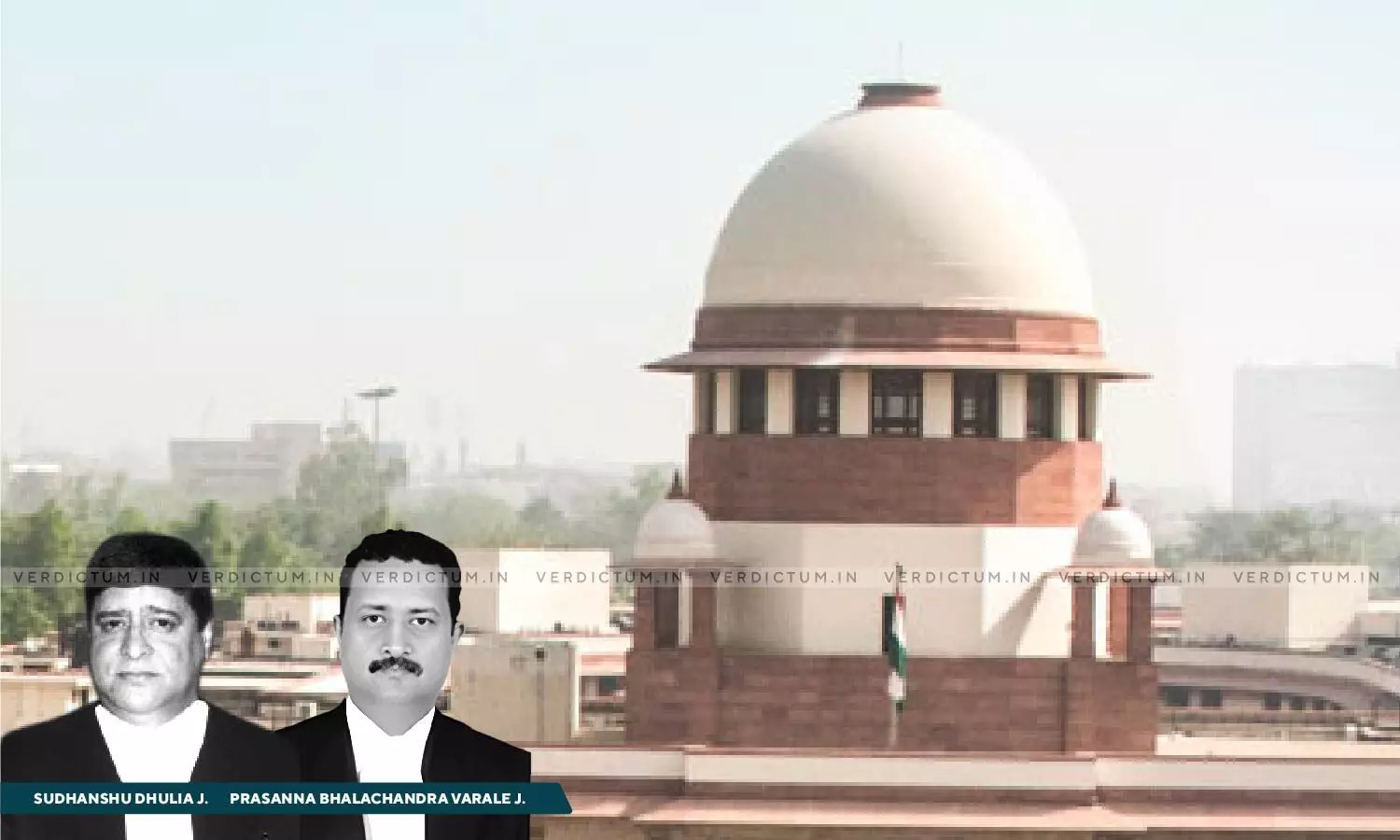
Doubts On Identity Of Accused: Supreme Court Acquits Murder Accused
 |
|The Supreme Court acquitted a murder accused noticing that no Test Identification Parade was conducted and the identity of accused remained in doubt.
The Court observed that in a case where the identity of the accused is not known and TIP has not been conducted, the court has to see if there was any description of the accused either in the FIR or in any of the statement of witness recorded during the investigation.
In that context, the Bench of Justice Sudhanshu Dhulia and Justice Prasanna B Varale acquitted the accused and observed that, "The identification of an accused in court is acceptable without a prior TIP and absence of TIP may not be fatal for the prosecution. It would depend on facts of each case. In the case at hand, though the appellant was identified in court by PW-1 and PW-2, the Trial Court did not attach much weight to it, as no identification proceedings were conducted, and the Court found it unsafe to acknowledge the identity merely on the basis of identification in the Court. In the present case, where there are six persons by the name of ‘Vishwanatha’ in the locality and where this Court has doubts on the presence of the two star witnesses PW-1 and PW-2 (who have identified the accused), we are of the opinion that the identity of the present appellant remained in doubt."
The appellant in this criminal appeal challenged the judgment and order passed by the High Court of Karnataka. The High Court had allowed the State's criminal appeal, reversing the Trial Court's acquittal order, and convicting the appellant of offences under Sections 302 and 450 read with Section 34 of the Indian Penal Code, sentencing him to life imprisonment under Section 302 IPC.
The prosecution's case was that Rohini (PW-1) and Rohithaksha (PW-3) lived with their 86-year-old mother Devaki (the deceased) in Kudupu, Mangalore. While PW-1, PW-3, and PW-4 (PW-3's wife) were not home, the appellant and co-accused Ravikumar broke into their house intending to commit robbery and strangled Devaki to death. PW-1 filed a written complaint, forming the basis of the FIR registered around 3:00 p.m. on the same day.
The FIR detailed that PW-1 returned home around 12:30 p.m., heard noises from inside, and found the door locked from the inside. With the help of PW-2, a neighbor, they peeped through the bedroom window and saw the appellant and Ravikumar strangling Devaki with a cloth. PW-1 recognized Ravikumar and called his name, causing both accused to flee.
The Sessions Judge acquitted the accused, citing contradictions between eyewitness testimonies and the autopsy report. The Judge noted discrepancies in PW-1 and PW-2's accounts and discredited their identification of the appellant.
The State's appeal against this acquittal was allowed by the High Court, reversing the acquittal and finding the accused guilty. The High Court deemed the contradictions minor and upheld the identification of the accused by PW-1 and PW-2, noting that the time gap between the crime and their testimony was only ten months.
Shortly after the High Court's judgment, co-accused Ravikumar passed away, leaving the appeal filed by the appellant Vishwanatha. The appellant's counsel argued that PW-1 and PW-2 were unreliable witnesses due to contradictions in their testimony and the autopsy report. He highlighted the absence of a Test Identification Parade (TIP), asserting that the appellant was a stranger to the witnesses and could not be convicted without it.
The State's counsel contended that the High Court correctly observed this was not a case of mistaken identity and that the absence of TIP was not detrimental since PW-1 and PW-2 had already identified the accused in court. Discrepancies in the testimonies were deemed minor and not impactful on the prosecution's case.
The High Court confirmed the concurrent findings of both lower courts regarding the homicidal nature of Devaki's death, supported by PW-6, the doctor who conducted the autopsy. The primary question was whether the accused were responsible for Devaki's death.
The Apex Court held that the prosecution failed to prove its case beyond a reasonable doubt. The primary basis for this decision was the lack of corroboration between the testimonies of the eyewitnesses (PW-1 and PW-2) and the post-mortem report. The Court observed that the prosecution's case relied heavily on the evidence provided by PW-1 and PW-2, who testified that they witnessed the accused strangling the deceased. However, the post-mortem report indicated that the ligature marks were only present on the front side of the neck, contrary to what would be expected if the deceased had been strangulated by pulling both ends of a rope as described by the witnesses.
Additionally, the court noted that there were inconsistencies regarding the timeline of events, and the fact that no Test Identification Parade (TIP) was conducted further weakened the prosecution's case.
Considering these factors, the Supreme Court concluded that it was unsafe to convict the appellant based solely on the testimony of PW-1 and PW-2.
Cause Title: Vishwanatha vs The State of Karnataka
Click here to read/download the Judgment